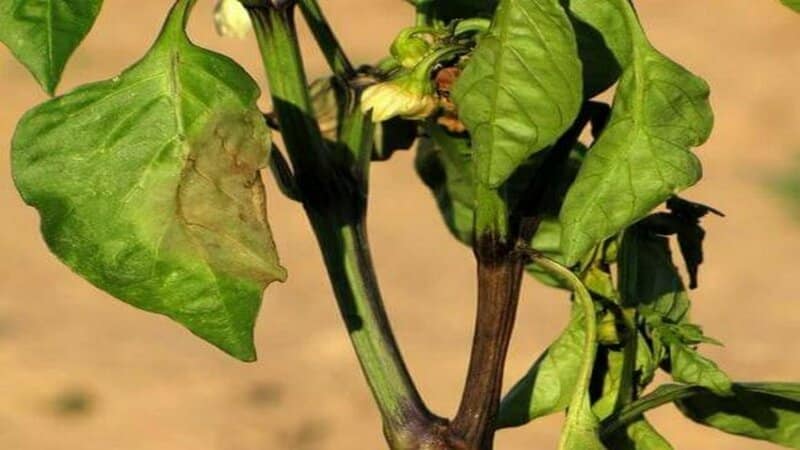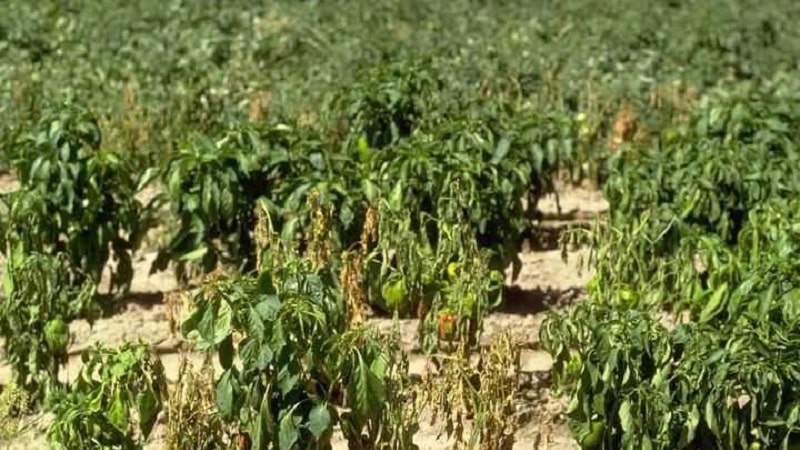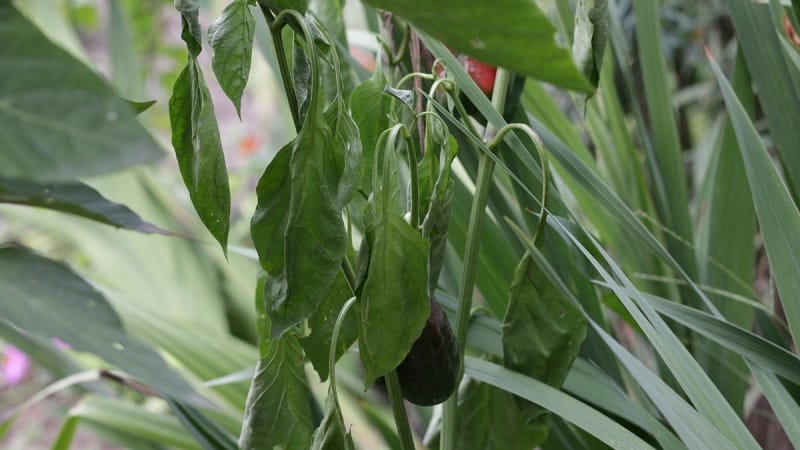Measures to combat Fusarium wilt of pepper and prevent the occurrence of the disease
Fusarium is a common infectious fungal disease of plants. Like many other diseases of garden crops, Fusarium wilt of pepper is difficult to fully treat. The main thing is to prevent it from appearing.
In the article we will understand what kind of disease this is and how to treat it, as well as what preventive measures should be taken to prevent its development.
What is fusarium wilt of pepper?
The causative agent of the disease is the fungus Fusarium spp. It affects plants at any stage of development. The fungus can remain in the soil for a long time until the opportune moment occurs: suitable environmental conditions or planting new seedlings in place of the fungal mycelium.
Wilting begins a few days after infection. The course of the disease depends on varieties pepper, the general condition of the plant and climatic conditions. Wounds also promote infection.
The main problem is that this disease cannot be completely cured and the plantings cannot be saved. You can only slow down the spread of the fungus or prevent its occurrence using preventive measures. Even if you managed to harvest some kind of crop, all infected plants must be burned.
External manifestations
The first external signs of fusarium are slight yellowing of the upper leaves and slight loss of moisture (cell turgor). The leaves then turn a darker, yellow-brown color that covers an increasingly larger area.The stem of the plant becomes thinner and weaker. Often, when the fruits are already ripe, it simply bends in half.
Pinkish spots can often be seen on damaged areas - this is the fungal mycelium of the causative agent of the disease.
The photo shows an infected plant.

Damage caused
Since the pathogen is in the soil, infection begins from the roots. The fungus penetrates the plant through conducting vessels through the root system, gradually reaching the leaves. As a result, the vessels become clogged, which leads to malnutrition of the plant and its poisoning with toxins. The photosynthetic function of the green part of the pepper is also impaired.
Fusarium blight reduces the overall viability of the plant, which can result in additional diseases.
Important! Pepper quickly withers and dies in the presence of all favorable factors for the life and reproduction of the fungus.
Fighting methods
Depending on the degree of damage to the plantings, you can use one of the following disease control measures or a combination of them. It is worth remembering that not all chemicals and elements interact well with each other.
Chemical
Chemicals should only be used in cases of severe damage. Of course, they will help quickly and accurately stop the development of the fungus. However, in addition to helping, they harm the plant itself and the soil.
These drugs include various types of fungicides: organic and inorganic. The former may contain quinones, benzimidazoles and carbamic acid derivatives.
The latter may contain an active ingredient such as copper sulfate, colloidal sulfur or copper oxychloride.The most popular fungicides on our market are Abiga-Pik, Acrobat MC, Quadris, Thanos, Fundazol and Hom.
Ways to use chemical fungicides:
- dressing seeds before planting;
- spraying soil and plants;
- fumigation of seeds and premises (toxic steam treatment).

Biological
Among the biological agents against Fusarium wilt, the following stand out:
- "Agat-25K" has a negative effect on the pathogen and promotes plant growth and productivity.
- "Fitosporin-M" is intended for treating soil and seeds before planting, as well as for watering plants.
- "Trichodermin" is used for pre-sowing treatment of seeds and is applied to the soil to prevent the occurrence of fungal infections.
- "Maxim" - for treating planting material.
- “Baktofit” creates healthy soil microflora and prevents the development of harmful bacteria.
- Potassium humate is an organomineral fertilizer made from lowland peat, which is applied to the soil.
Folk
Several traditional methods of treating fusarium:
- Spraying the soil and plantings with a solution of potassium permanganate. It should be light pink in color so as not to burn the leaves.
- Sprinkling the beds with a mixture of powdered sulfur and ash.
- Liming the soil with dolomite flour.
- Adding chalk powder to the soil.
- Watering with a solution of boric acid and potassium permanganate.
Experienced gardeners warn that moderation is needed in everything. Excessive amounts of fertilizers and treating plants with various solutions can only harm them.
Preventive measures
To prevent the occurrence of Fusarium wilt of pepper, follow simple rules:
- Use only healthy seeds for planting.
- Planting varieties resistant to fusarium (Lastochka, Arsenal, Rostov Jubilee, Darina, Zolotoe Chudo, Gift of Moldova, Everest, Zhanna, Jack).
- Treating the roots with a fungicide before planting.
- Compliance crop rotation.
- Removing diseased plants along with a clod of earth.
- Burning infected plants.
- Washing shoes after working with infected plantings.
- Washing and disinfecting garden tools.
- Soil disinfection (steaming or using fungicides).
- Regular removal of weeds in rows and between rows.
- Regular, but not excessive watering.
- Be careful when working with plants: avoid mechanical damage.

Tips and tricks
Cabbage and pumpkin crops are the best predecessors of peppers in the garden. It is important to regularly add organic matter during the cultivation of previous vegetables. If you do not plan to grow anything other than peppers, use an intercropping crop: it could be oats, barley, rye or triticale.
The roots of cereals secrete special substances that kill the fungus. Cereal biomass should be crushed and plowed. Microbes that decompose straw heal the soil and create favorable microflora, but they need large amounts of nitrogen. Therefore, to prevent microbes from taking nitrogen from new pepper plantings, it is necessary to add this substance to the soil separately.
Attention! Experienced gardeners recommend mulch planting with black PVC film or silver polyethylene film. It is believed that this prevents the fungus from developing.
Let's sum it up
Fusarium wilt is a serious plant disease. To avoid it, you should keep the beds clean and tidy, remove weeds on time, observe crop rotation and watering regime.Also, do not forget about regular disinfection of garden tools and soil.
By following simple rules, you can avoid the appearance of not only fusarium, but also many other dangerous diseases pepper.